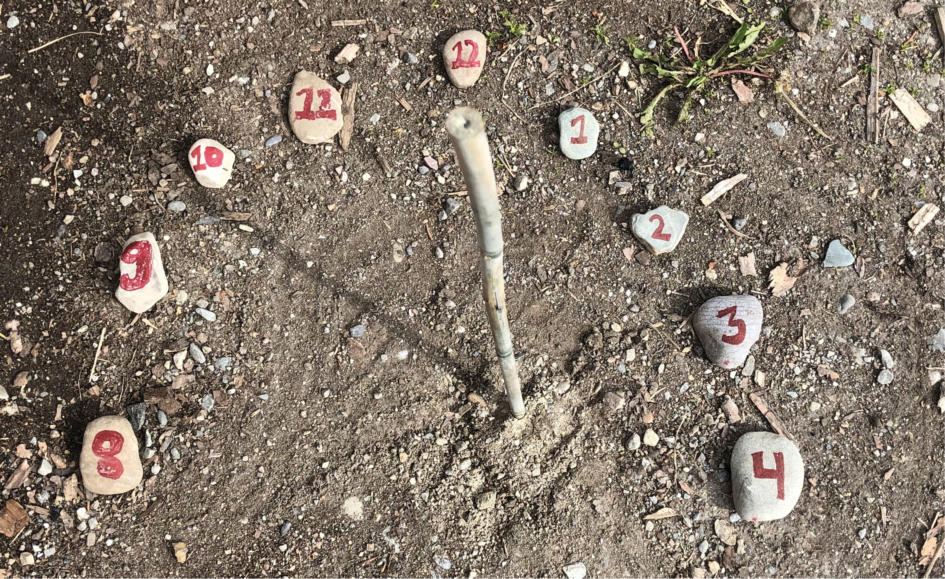Introduction:
Have you ever looked up into the sky on a sunny day and noticed the Sun moving across the sky as the day goes on? Did you know that it’s actually the Earth that is rotating around its own axis? We are moving, not the Sun! A sundial is the oldest known instrument for telling time. A simple sundial has a non-moving object and a flat surface around it. As the Sun shines throughout the day, it casts shadows on the ground. The positions of the shadows can tell us what time it is.

Human Sundial (K-4):
Choose a sunny day and a wide open space. Shadows can grow long during different parts of the day and trees or structures can get in the way. Have an adult place a “X” or a “sun symbol” on the spot where you will stand each time you’re having your shadow traced. At least 4 times in the day, stand on the marked spot and have someone trace your shadow using the chalk. Write the time of day and the length of shadow beside the tracing. After your last shadow tracing, stand back and look at your human sundial. You stayed in one place all day while the Earth rotated on its own axis; this is why your shadows moved. So awesome! Consider the questions in the activity sheet to help you figure out how a sundial helps us tell time.

Nature Sundial (Grades 4-7):
Now that you have an understanding of how we can use the Sun and our shadows to tell time, why not create a more permanent “nature clock”? Traditional sundials have a pointer, called a gnomon, that casts a shadow on the surface surrounding it when struck by sunlight. For this activity, you’ll be using a small stick and marking its shadow length with rocks to indicate the hour. Clear a circular area of bare ground and place a stick (gnomon) in the center. You could use a bare patch of ground or even put it in a sunny spot in your garden. Just make sure wherever you choose gets full sunshine all day. If possible, with the help of an adult, determine which way is north and tilt your stick slightly in that direction.
Gather 12 rocks to represent hours 1-12. Use paint or a white marker to write your “nature clock” numbers on. First thing in the morning, go outside, check the time, and place the corresponding rock where the tip of the shadow falls on the ground.
For example, if it’s 7 a.m. when you head out to your sundial, place the rock with the number seven at the tip of the shadow cast by your stick. Each hour, on the hour, head out to your sundial and place the rock that corresponds to the current time at the tip of the shadow. Continue this process until dusk when there is no more sunlight left in the day. Your sundial will be complete at day’s end. As long as the Sun is shining, you can use this simple device to tell what time of the day it is.

Extension Questions:
1. Will the shadow cast by your gnomon be the same length all day?
2. Will the length of the shadow change depending on what season it is? If so, why?








